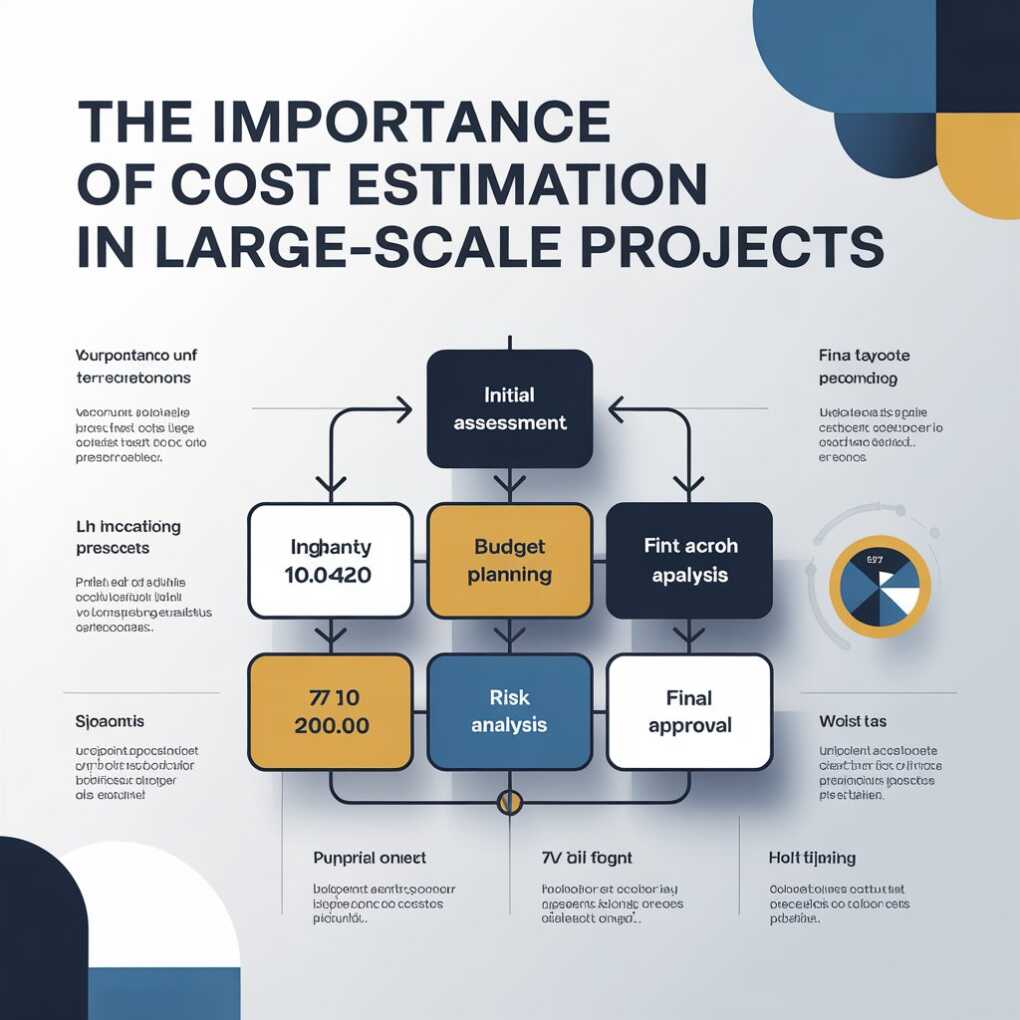Every big-scale mission, whether or not it’s a business facility, infrastructure development, or complicated business, begins with one essential step — fee estimation. This important segment acts as the financial blueprint for the whole venture, outlining how sources will be allotted, how an awful lot of funding can be required, and how the project can stay within budget from beginning to completion. When executed right, value estimation doesn’t simply make sure of an easy workflow — it safeguards profitability, minimizes risk, and establishes duty amongst all stakeholders.
In the competitive construction panorama, correct value forecasting could make or break a project. It facilitates mission managers anticipating economic challenges early, prevents delays caused by mismanagement, and ensures clients maintain confidence in the contractor’s ability to deliver. Simply put, it’s the spine of successful undertaking execution.

Understanding Cost Estimation
To understand why fee estimation is so critical, it’s vital to know what it truly entails. In simple phrases, value estimation is the procedure of predicting the monetary resources needed to complete a project. This consists of direct costs, including materials, hard work, and equipment, in addition to indirect costs like permits, overheads, and contingencies. For agencies like Structure Contracting in Oman, fee estimation serves as both a roadmap and a hazard control device. It lets in challenge teams to assess the feasibility of complicated builds and make statistics-driven decisions. A correct estimate guarantees that every stage — from initial planning to challenge transport — runs effectively and without financial surprises.
When estimations are built on reliable facts, historic insights, and contemporary analytics, the result is a sensible financial plan that aligns with challenging dreams and marketplace conditions.
The Role of Modern Technology in Cost Estimation
Gone are the days when estimators relied entirely on spreadsheets and manual calculations. Today, the generation has revolutionized the manner in which massive-scale initiatives are planned and priced. Tools like Building Information Modelling (BIM), Artificial Intelligence (AI), and advanced estimation software programs permit production professionals to calculate charges extremely accurately and successfully. Digital structures also make it simpler to regulate estimates in real time while there are design adjustments, delivery chain adjustments, or hard work fluctuations. In this manner, challenge managers can maintain monetary manipulation even if surprisingly demanding situations arise. By integrating era into estimation workflows, contractors benefit from visibility over each value factor, leading to improved accuracy and higher patron verbal exchange. Ultimately, this digital transformation lets creation corporations stay competitive in an industry driven by innovation and precision.
Key Benefits of Accurate Cost Estimation
Cost estimation affords several long-term benefits that extend beyond budgeting. Some of the maximum benefits consist of:
Prevention of Cost Overruns: With accurate forecasting, projects are less likely to exceed their allotted finances.
Informed Decision-Making: Reliable estimates help manual investors and stakeholders in comparing task feasibility.
Enhanced Resource Allocation: Proper estimation enables making certain that manpower, substances, and equipment are disbursed effectively.
Better Risk Management: Identifying capacity price variations early allows proactive planning.
Client Trust and Transparency: Clients admire transparency when price expectancies align closely with actual outcomes.
Each of these consequences contributes to stronger commercial enterprise credibility and smoother mission execution, especially in large-scale operations in which even small deviations can result in principal losses.
Common Challenges in Large-Scale Project Estimation
While the concept of price estimation is straightforward, executing it accurately may be difficult. Large tasks often involve multiple stakeholders, fluctuating cloth prices, and shifting timelines — all of which make precision harder.
Some not-unusual hurdles include:
- Unclear assignment scope: Incomplete or changing designs can lead to erroneous budgets.
- Market volatility: Material costs and exertion fees can increase all of a sudden
- Limited statistics access: Lack of ancient cost information can weaken forecasting models.
- Time constraints: Rushed estimation procedures can overlook important costs.
Overcoming these demanding situations requires experience, collaboration, and the use of reliable estimation methods. Successful groups establish standardized strategies, conduct frequent fee evaluations, and spend money on continuous estimator schooling to enhance accuracy and adaptability.
The Strategic Impact of Cost Estimation
Cost estimation isn’t pretty much assigning numbers to materials and labour — it’s approximately shaping the whole approach of a mission. When estimators think in marketplace situations, sustainability desires, and supply chain dynamics, they invent a monetary plan that helps long-term performance and profitability. For instance, choosing the right materials can appreciably have an impact on both short-term fees and long-term value. Sustainable substances might cost extra to begin with, but reduce upkeep and operational fees later. In this context, sourcing extraordinary substances, which include Buy Galvanized Steel Coils, can ensure durability, lessen structural failures, and enhance lifecycle overall performance for large tasks.
Moreover, accurate estimation facilitates aligning the economic method with layout intentions and environmental goals. It promotes collaboration between architects, engineers, and monetary planners — ensuring that all decisions are both creative and cost-effective.
Real-World Relevance: When Precision Saves Millions
In big-scale developments, even a 2% mistake in cost estimation can bring about tens of millions of dollars in sudden charges. For instance, infrastructure tasks like building highways or strengthening flora depend heavily on correct estimation to allocate budgets for substances, manpower, and logistics.
When contractors underestimate prices, it may lead to task delays, disputes, or compromised first-class. On the other hand, overestimation might discourage traders and stall challenge approvals. Striking the right stability via statistics-sponsored estimation allows holding acceptance as true and ensures financial balance throughout the task lifecycle.
The Future of Cost Estimation
As the development enterprise keeps conforming, so does the science of value estimation. Emerging technologies, inclusive of AI-driven analytics, digital twins, and predictive modeling are redefining how professionals check venture fees. These improvements enable estimators to investigate lots of variables concurrently, forecast capacity value escalations, and create adaptive budgeting techniques. Cloud-based systems are also improving collaboration by permitting project teams to paint on shared economic fashions in real-time.
The destiny of price estimation is not just about precision—it’s about approximate integration. Projects that integrate virtual tools with expert human judgment will continuously obtain higher outcomes, both financially and operationally.
Conclusion: Building Success Through Precision
In today’s speedy-paced construction environment, correct value estimation is more than an economic necessity — it’s a strategic advantage. It presents the clarity needed to make smart decisions, manage dangers, and deliver super effects on time and within budget.
For large-scale tasks, precision in estimation is what transforms plans into successful outcomes. By embracing contemporary gear, sustainable substances, and data-driven procedures, contractors can ensure that each dollar invested contributes to lasting cost.
Ultimately, fee estimation isn’t just about predicting prices — it’s about building confidence, efficiency, and fulfillment from the floor up.
